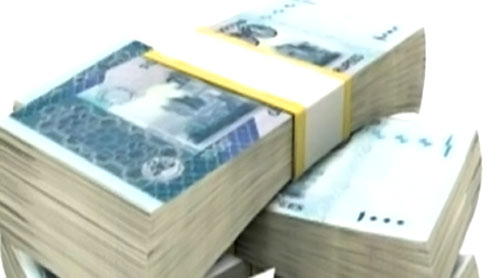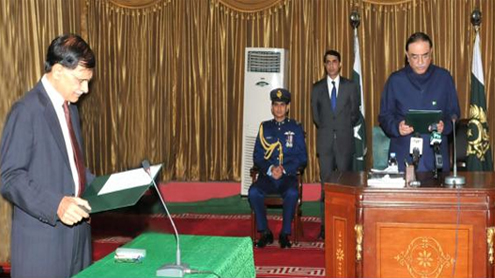
KARACHI: The economic observers foresee big distortions in long-term inflationary outlook as monetary expansion in the poverty-stricken country grows beyond 8 percent, far higher than the current pace of GDP growth.
The central bank reported Tuesday that monetary expansion in the country grew to 8.6 percent during July-April 6 (FY12) compared to 8.92 percent of corresponding period in FY11.In monetary terms the Broad Money, also called as M2, swelled to Rs 580.769 billion as against Rs 515.080 billion of same period last year.On the other hand, growth in the country’s Gross Domestic Product (GDP) is staggering between two and three percent. “For last four years all averages in the monetary sector are distracted,” recalled the economist Asfar Bin Shahid.Fiscal indiscipline the analysts cite as a sole reason for this disproportionate and therefore negative growth in the monetary expansion or, in other words, the supply of money.
During the period under review, the central bank said currency worth Rs 201.59 billion was in circulation, slightly less than last year’s Rs 257.29 billion.“This is because of government’s excessive budgetary borrowing (from banks) that is adding greatly to supply of money,” viewed A.B Shahid.According to State Bank figures, the cash-strapped government’s borrowing from the risk-averse banks had peaked to almost Rs 1 trillion, accumulating to over Rs 959 billion during first 10 months of FY12 against last year’s Rs 417.520 billion.
The funds-starved government in the center and provinces, respectively, borrowed Rs 296.895 billion and Rs 662.280 billion from the state and commercial banks during July-April period. The review period last year had seen government’s budgetary credit from the banks standing at Rs 106.69 billion and Rs 310.826 billion. “This (government borrowing) has a huge multiplier affect that translates the Rs 300 billion government bank loans at least into Rs 1 trillion,” economist A.B Shahid said. The currency notes, he said, were circulating in the economy for non-productive purpose. “The money is just traveling into the economy without any goods being produced.”
Nauman Khan, an analyst at Topline Research, opines that above 8 percent growth in broad money would have been a positive indicator had it attributed by the private credit off-take. This, however, is not the case here as the banks’ advances to the growth-oriented private sector could hardly touch the Rs 223 billion mark during the months in review. “The long-term inflationary outlook would be on the higher side,” said Khan. Ideally, the analysts said the monetary expansion should grow in accordance with the GDP growth in the country.
“The supply of money should increase at a pace slightly higher from the GDP growth as this would help the economic managers contain profits,” A.B Shahid suggested.The backbreaking inflation in the poverty-stricken country is staggering beyond 10 percent, the Consumer Price Index stood at 10.79 percent in March. The State Bank predicts that the price hike would continue to remain in double digits even during the next financial year, FY13. – PT












